| Listing 1 - 10 of 181 | << page >> |
Sort by
|
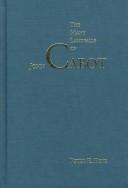
ISBN: 1282008188 9786612008184 1442681691 0802071503 0802007864 9781442681699 9780802007865 9780802071507 Year: 1997 Publisher: Toronto Buffalo London University of Toronto Press
Abstract | Keywords | Export | Availability | Bookmark
 Loading...
Loading...Choose an application
- Reference Manager
- EndNote
- RefWorks (Direct export to RefWorks)
"On 24 June 1497 John Cabot landed somewhere on the eastern seaboard of what is now Canada, yet even today, five hundred years later, no one knows precisely where. Once an issue in diplomatic negotiations over title to a continent, Cabot's landfall has also been the subject, especially in centennial years, of competing attempts to appropriate the meaning of the event." "Beginning with the historical context of Cabot's journey, Pope traces the various landfall theories which have placed his landing in locations from the Strait of Belle Isle to Cape Breton. The very uncertainty of our knowledge, he argues, has allowed nationalists in both Newfoundland and Canada to shape the debate about Cabot's itinerary and to stake claims to the landfall that amount to the invention of differing national traditions. As well, Pope concludes, the invented tradition of 'discovery' has allowed Europeans and their descendants to overlook the fact that their possession of North America is based on appropriation from Aboriginal peoples."--Jacket.
HISTORY --- Europe / General --- Americas - General --- Regions & Countries - Americas --- History & Archaeology --- Cabot, John, --- America --- Discovery and exploration --- British --- Historiography. --- Caboto, Giovanni, --- Caboto, Juan, --- Americas --- New World --- Western Hemisphere --- Cabot, John --- British (Nation) --- Historiography --- HISTORY / Canada / Pre-Confederation (to 1867).
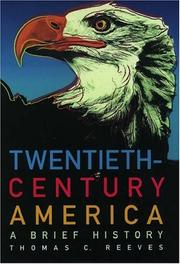
ISBN: 0195044843 0195044835 Year: 2000 Publisher: Oxford : Oxford university press,
Abstract | Keywords | Export | Availability | Bookmark
 Loading...
Loading...Choose an application
- Reference Manager
- EndNote
- RefWorks (Direct export to RefWorks)
In this comprehensive examination of recent American history, the author provides solid coverage without unnecessary detail and trivia. Each chapter discusses developments of a period, ranging from politics to race and gender issues.
History. --- United States - General --- Regions & Countries - Americas --- History & Archaeology --- United States --- History --- 20th century
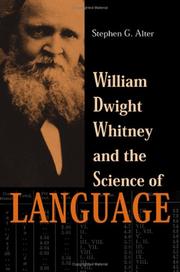
ISBN: 0801880203 1421427605 142142911X Year: 2005 Volume: 123,1
Abstract | Keywords | Export | Availability | Bookmark
 Loading...
Loading...Choose an application
- Reference Manager
- EndNote
- RefWorks (Direct export to RefWorks)
This exploration of an early phase of scientific language study provides readers with a unique perspective on Victorian intellectual life as well as on the transatlantic roots of modern linguistic theory.
Whitney, William Dwight --- Whitney, William Dwight, --- Whitney, W. D. --- History of the Americas
Multi
ISBN: 9781786803245 9781786803252 1786803259 Year: 2018 Publisher: London : Pluto Press,
Abstract | Keywords | Export | Availability | Bookmark
 Loading...
Loading...Choose an application
- Reference Manager
- EndNote
- RefWorks (Direct export to RefWorks)
This is the first comprehensive history of pre-Civil War American radicalism, mapping the journeys of the land reformers, Jacksonian radicals and militant abolitionists on the long road to the failed slave revolt of Harpers Ferry in 1859. This book contains new and fascinating insights into the cast of characters who created a homegrown American socialist movement through the nineteenth century - from Thomas Paine's revolution to Robert Owen's utopianism, from James Macune Smith, the black founder of organised socialism in the US, to Susan B. Anthony, the often overlooked women's rights activist. It also considers the persistent pre-capitalist model of the Native American. Long Road to Harpers Ferry captures the spirit of the times, showing how class solidarity and consciousness became more important to a generation of workers than notions of American citizenship. This is a story that's been hidden from official histories, which must be remembered if we are to harness the latent power of socialism in the United States today.
Book
ISBN: 2234024447 Year: 1992 Volume: vol *24 Publisher: Pernoud : Stock,
Abstract | Keywords | Export | Availability | Bookmark
 Loading...
Loading...Choose an application
- Reference Manager
- EndNote
- RefWorks (Direct export to RefWorks)
Women --- -Human females --- Wimmin --- Woman --- Womon --- Womyn --- Females --- Human beings --- Femininity --- History --- -Americas --- Americas --- New World --- Western Hemisphere --- Discovery and exploration --- -Spanish. --- -History --- Human females --- America --- Spanish. --- Latin America --- Spanish
Book
Abstract | Keywords | Export | Availability | Bookmark
 Loading...
Loading...Choose an application
- Reference Manager
- EndNote
- RefWorks (Direct export to RefWorks)
Early maps --- -Maps, Early --- Geography --- Exhibitions --- History --- Americas --- New World --- Western Hemisphere --- Maps --- -Exhibitions. --- -Exhibitions --- America --- Exhibitions. --- Cartography
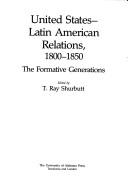
ISBN: 0585233683 9780585233680 0817304827 9780817304829 0817352732 9780817352738 Year: 1991 Publisher: Tuscaloosa ; London Alabama University Press
Abstract | Keywords | Export | Availability | Bookmark
 Loading...
Loading...Choose an application
- Reference Manager
- EndNote
- RefWorks (Direct export to RefWorks)
Latin America --- Regions & Countries - Americas --- History & Archaeology --- United States --- Foreign relations --- 1815-1861 --- 1801-1815 --- Peru --- Brazil --- Argentina --- Colombia --- Chile
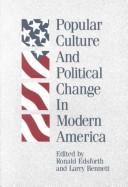
ISBN: 058506329X 9780585063294 0791407659 9780791407653 0791407667 9780791407660 143840185X Year: 1991 Publisher: Albany State University of New York Press
Abstract | Keywords | Export | Availability | Bookmark
 Loading...
Loading...Choose an application
- Reference Manager
- EndNote
- RefWorks (Direct export to RefWorks)
Politics and culture --- Popular culture --- United States - General --- Regions & Countries - Americas --- History & Archaeology --- History --- United States --- 20th century

ISBN: 0460861360 Year: 1993 Publisher: London J M Dent
Abstract | Keywords | Export | Availability | Bookmark
 Loading...
Loading...Choose an application
- Reference Manager
- EndNote
- RefWorks (Direct export to RefWorks)
Comparative religion --- Mythology --- Dictionaries --- non-classical mythology --- culture and religion --- the Near East --- Europe --- India --- the Americas --- Australasia --- Indonesia --- China --- Japan --- Africa
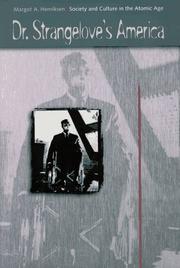
ISBN: 0520083105 Year: 1997 Publisher: Berkeley ; Los Angeles ; London University of California Press
Abstract | Keywords | Export | Availability | Bookmark
 Loading...
Loading...Choose an application
- Reference Manager
- EndNote
- RefWorks (Direct export to RefWorks)
Did Dr. Strangelove's America really learn to "stop worrying and love the bomb," as the title of Stanley Kubrick's 1964 film would have us believe? What has that darkly satirical comedy in common with the impassioned rhetoric of Martin Luther King's "I Have a Dream" speech or with the beat of Elvis Presley's throbbing "I'm All Shook Up"? They all, in Margot Henriksen's vivid depiction of the decades after World War II, are expressions of a cultural revolution directly related to the atomic bomb. Because there was little organized, extensive protest against nuclear weapons and nuclear proliferation until the 1980s, America's overall reaction to the bomb has been seen as acceptance or indifference. Henriksen argues instead that, in spite of the ease with which Cold War exigencies overrode all protests by scientists or others after the end of World War II, America's psyche was split as surely as the atom was split. In opposition to the "culture of consensus," which never questioned the pursuit of nuclear superiority, a "culture of dissent" was born. Its current of rebellion can be followed through all the forms of popular culture, and Henriksen evokes dozens of illuminating examples from the 1940s, '50s, and '60s.
Cold War --- Atomic bomb --- Regions & Countries - Americas --- History & Archaeology --- United States - General --- Social aspects --- Moral and ethical aspects --- United States --- Civilization --- 1945 --- -Cold War
| Listing 1 - 10 of 181 | << page >> |
Sort by
|

 Search
Search Feedback
Feedback About UniCat
About UniCat  Help
Help News
News